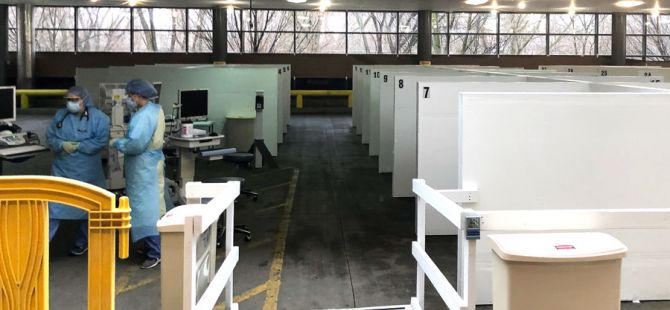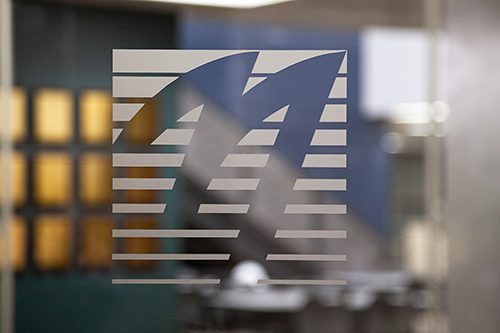During the past few months, many hospitals have scrambled to make urgent facility changes to accommodate a surge, or anticipated surge, in patients seeking treatment for the COVID-19 virus.
The changes have been hastily made in response to an emergency, and they have often resulted in compromises to optimal arrangements and configurations.
Grumman/Butkus Associates, along with collaborators Intgrated Facilities Solutions and Eckenhoff Saunders Architects, has helped many hospital clients respond to the call to set up temporary triage areas, temporary negative-pressure areas, and temporary critical care areas to meet the challenges. So … what happens when the immediate surge has passed?
Let our team lend their expertise, incorporating many lessons learned during the past couple of months, to help your facility take the next steps:
Consider the future of the temporary provisions that have been installed to handle the emergency. Options include:
- Modify the temporary conditions but leave them in place for future use.
- Reconfigure the temporary provisions to provide “switchable” functionality so the facility can better accommodate both its normal mode of operation and a future pandemic mode.
- Analyze the temporary provisions to assess system operating capabilities under peak summer and winter conditions.
Plan for the next surge of pandemic patients.
- With a little more time now available, develop plans that properly address the demands of pandemic response without the compromises that have been forced by emergency actions.
- Apply recent experience to address shortfalls of existing healthcare facilities, helping you provide the tools your staff needs to handle a future surge of pandemic patients while understanding the constraints of the existing facility.
- Identify future practical changes that can improve flexibility, so you can better accommodate more critical functions in the treatment of critically ill and infectious patients.
Prepare for future modifications that will enable fast reconfigurations to accommodate a pandemic.
- Develop detailed preparedness plans for area and system reconfigurations.
- Plan the purchase of portable ventilation equipment that can be stored and quickly put into place if a pandemic event develops.
- Install permanent provisions to support the reserve equipment.
Re-evaluate clinical areas with an eye to improvements that will aid and protect those who must treat critically ill and infectious patients under extreme conditions.
- Analyze flows of patients, staff, and supplies that will vary from traditional paths under a revised pandemic-treatment scenario.
- Evaluate existing, traditional staff-support spaces to learn whether they can adequately accommodate revised pandemic treatment scenarios, including added PPE don/doff requirements and overall decontamination regimes.
- Develop plans to quickly convert traditional support spaces to serve suitable functions during pandemic mode.
Our expert architectural, engineering, and project management team can help your facility navigate all these challenges to improve preparation and future response, providing more protection for your staff and patients alike. These steps will help your organization make the most of the difficult lessons learned during the initial COVID-19 pandemic experience.
Contact Jim Shults for more information about healthcare COVID response.
Grumman/Butkus Associates, a 115-person MEP engineering firm, specializes in engineering services for complex commercial and institutional facilities, including more than 100 current healthcare clients. G/BA has performed consulting for COVID-19 response actions for 16 hospitals in the past two months, providing a myriad of solutions to ventilation and medical gas challenges tailored to each facility, providing a safer hospital environment during the pandemic crisis. G/BA collaborated with the Army Corps of Engineers to reopen a shuttered 240,000-square-foot hospital to treat Level 2 and Level 3 COVID-19 patients, deploying a team of seven engineers who worked more than 1,200 hours on-site over a 19-day period. A large crew of contractors received engineering guidance for bringing the vacant hospital back to life and reconfiguring it for its new COVID response.



